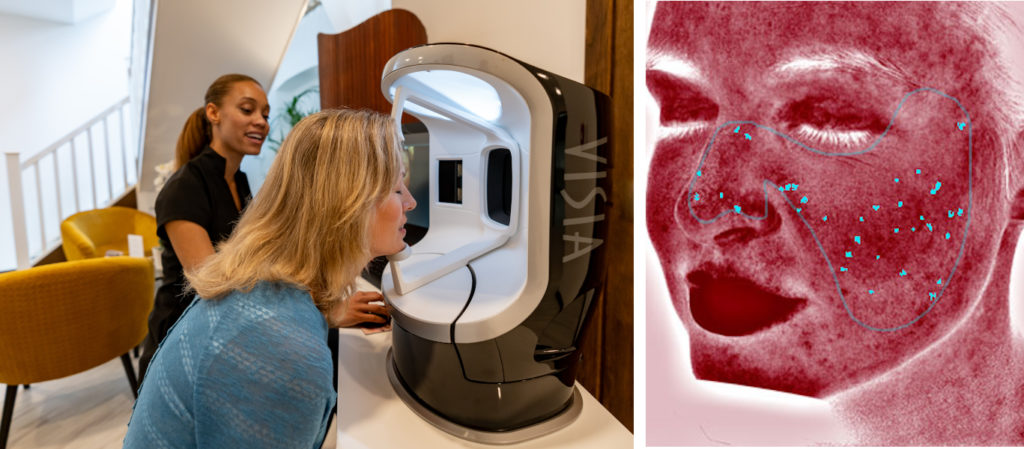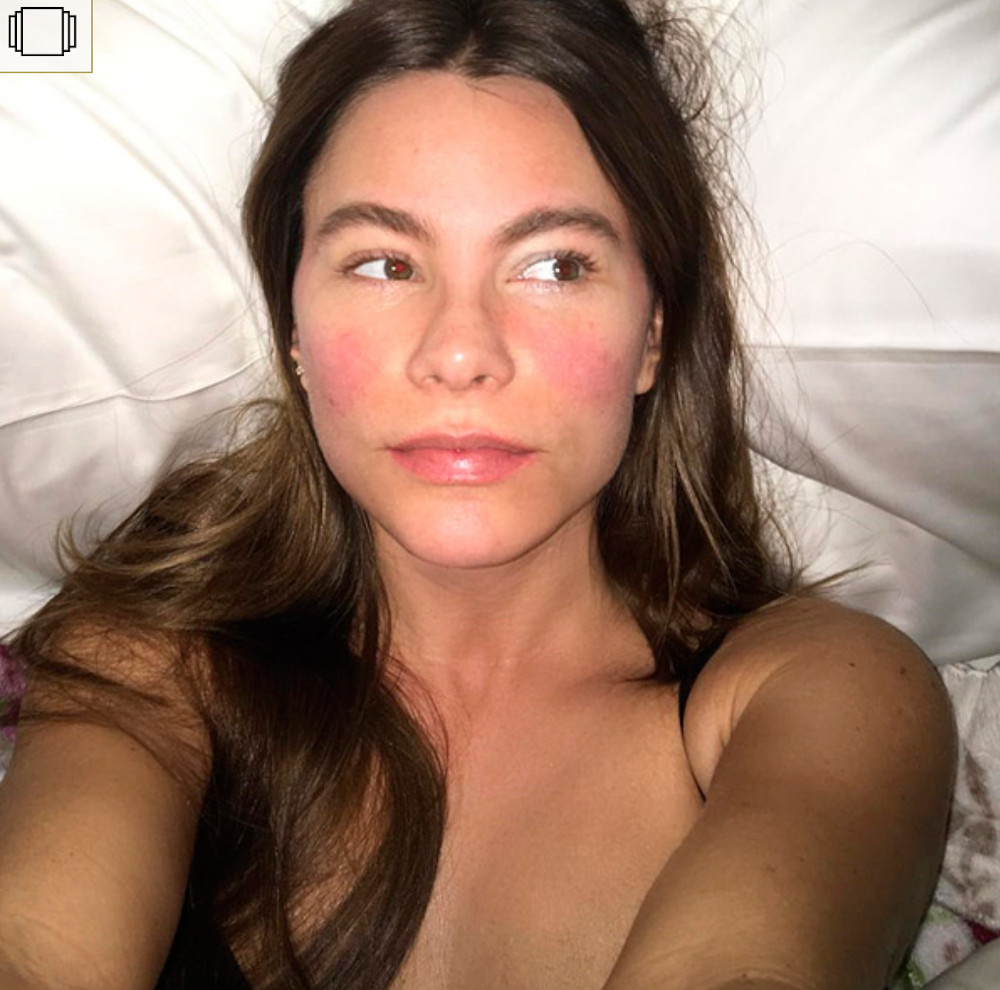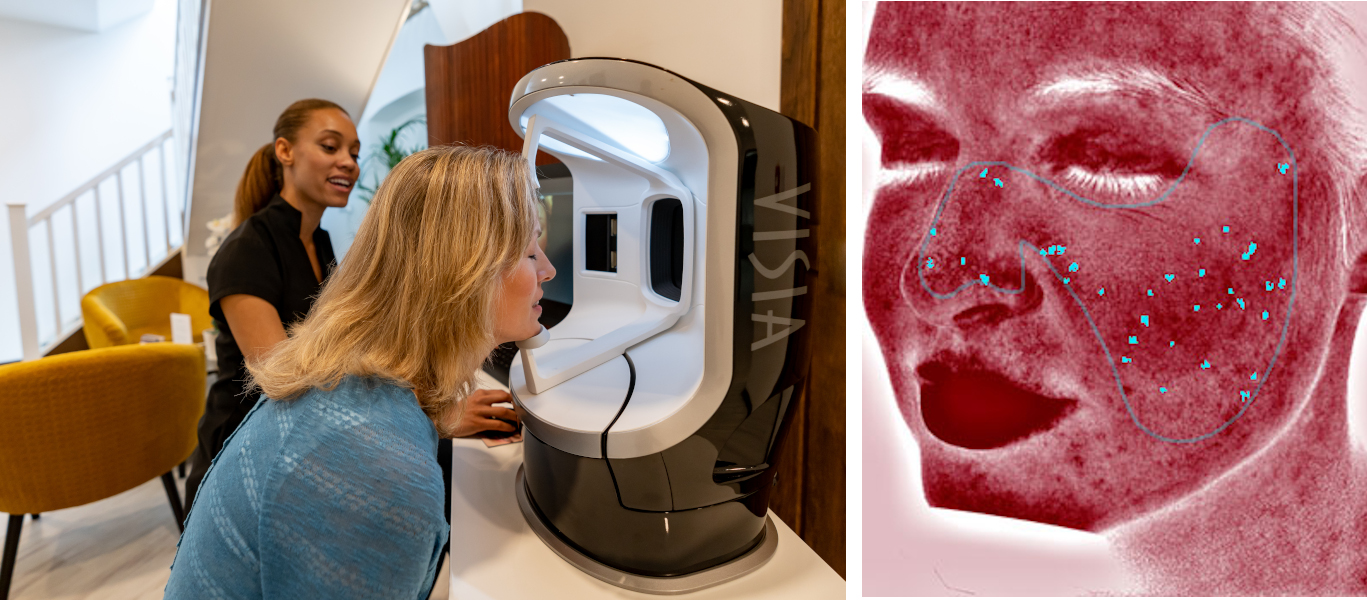Rosacea Awareness Month

What is Rocasea?
Rosacea is a common but poorly understood long-term skin condition that mainly affects the face.
It can be controlled to some degree with long-term treatment, but sometimes the changes in physical appearance can have a significant psychological impact.
Rosacea is a chronic inflammatory skin condition that usually affects the face. People may mistake rosacea for acne, eczema, or an allergic skin reaction.
Rosacea is estimated to affect around 5% of adults worldwide. Although rosacea is often thought to affect women more than men, studies have revealed an approximately equal gender distribution.
Signs and Symptoms
- Burning and stinging sensations
- Permanent redness
- Spots (papules and pustules)
- Small blood vessels in the skin becoming visible
Rosacea is divided into several subtypes by the predominant symptoms. The most common subtypes are listed below.
Papulopustular rosacea is characterised by red bumps and sometimes whiteheads on the nose, forehead, cheeks andchin. This condition may resemble acne.
Erythematotelangiectatic rosacea is characterised by frequent blushing or flushing and a persistently red face with dilated blood vessels.
Ocular rosacea presents with a dry or gritty feeling in the eyes and red, inflamed eyelid margins.
Rhinophyma is characterised by an enlarged nose with thickening of the skin and large pores.
Who gets it?
Rosacea typically presents after the age of 30 and becomes more prevalent with age. However, it can occur at any age and occasionally presents in children. Although rosacea can affect anyone, it is more common in those with fair skin, blue eyes, and those of Celtic or North European descent.
Although Colombian sensation Sofia Vergara loves to be in the spotlight and render the best performance every time she is in front of the camera, her passion for acting has also contributed to a certain disease that causes the reddening and swelling of the skin – rosacea – and has been an ongoing struggle for nearly a decade.
“I have struggled with this for six or seven years. It is hard because I get very red, so I realized that I need to treat my skin as a sensitive skin, which I did not do before” she revealed.
What is the cause?
- Genetic susceptibility
- Altered microbiome of the skin and gut
- Neurocutaneous mechanisms
- Impaired skin barrier (Affected skin displays features indicating skin barrier impairment, allowing bacterial colonisation and inflammation)
Trigger Factors
- Spicy food
- Hot beverage
- Stress
- Hot baths
- Strenuous exercise
- Alcohol
- Extreme hot and cold weather 8. Dehydration
- Stimulants
Treatments that help
Laser Skin Rejuvenation
Laser treatment uses heat from wavelengths of light to collapse the visible, tiny red blood vessels. Laser treatment can reduce the density of the blood vessels in the superficial part of the skin. The treatment leads to reduction in redness, flushing symptoms and burning and stinging sensations.
Sylfirm X
As a treatment for medical skin conditions and damage, the Sylfirm X reacts ONLY to abnormal blood vessels and tissue to selectively treat various skin complaints like rosacea, melasma or scarring without harming the surrounding healthy skin.
We encourage you to book in your VISIA SKIN ANALYSIS so we can analyse your skin and find the best treatment for you. Together we can help you feel and look your best! We are here to help.








